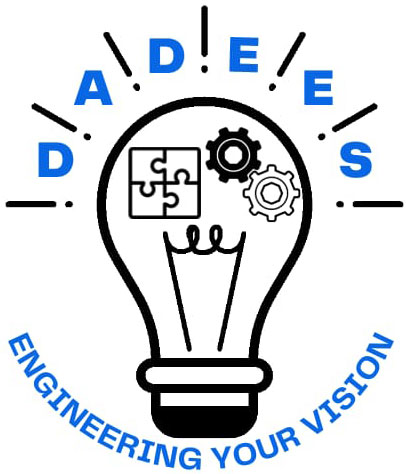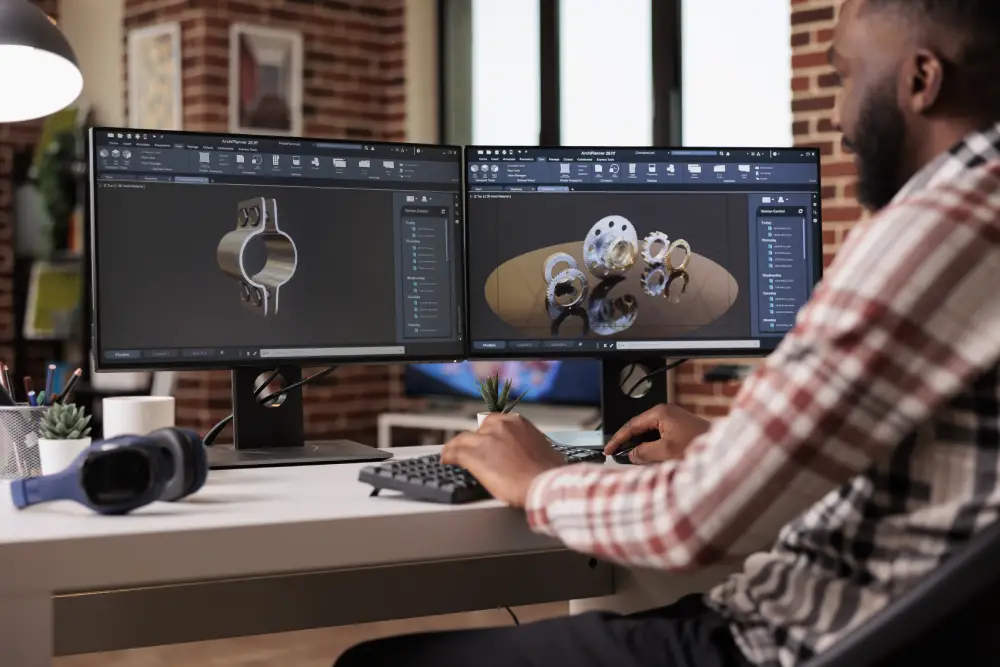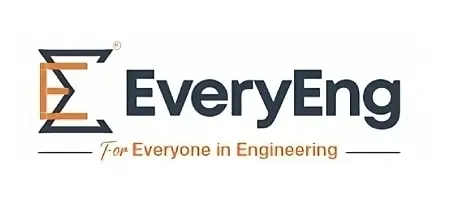Simulations play a pivotal role in the mechanical design of parts and assemblies, revolutionizing how engineers approach product development. By leveraging advanced computational tools, simulations enable engineers to predict and analyze the behavior of components under various conditions, ensuring optimal performance and reliability.
Key Benefits of Simulations:
- Design Validation: Simulations allow engineers to test designs virtually, reducing the need for physical prototypes. This accelerates the design process and minimizes costs associated with iterative prototyping.
- Performance Optimization: Through simulations, engineers can identify weak points, optimize material usage, and enhance the overall efficiency of parts and assemblies.
- Risk Mitigation: By predicting potential failures or performance issues, simulations help in addressing problems early in the design phase, ensuring safer and more reliable products.
- Cost Efficiency: Simulations reduce manufacturing costs by minimizing errors, rework, and material wastage.
Types of Simulations:
1. Structural Analysis
Overview: Structural analysis is foundational in mechanical design. It uses techniques such as Finite Element Analysis (FEA) to evaluate how parts withstand loads, including forces, pressures, and impacts. This type of simulation helps engineers predict stress concentrations, deformations, and potential failure points before manufacturing begins.
- Static vs. Dynamic Analysis: In static structural analysis, engineers examine parts under constant loads, determining whether a design can support its intended use without yielding or crashing. In contrast, dynamic structural analysis investigates time-dependent forces like impacts or vibrations, capturing transient behaviors that might lead to fatigue or failure over time.
- Linear and Nonlinear Approaches: Linear structural simulations assume that material properties remain constant regardless of stress, offering simplicity and speed. However, many real-world applications require nonlinear simulations that account for phenomena like plastic deformation or large displacements. This deeper level of analysis ensures more reliable predictions under extreme conditions.
- Contact and Assemblies: Within assemblies, understanding how parts interact through contacts (such as bolt joints or gear engagements) is crucial. Simulations can reveal how misalignments, friction, and clamping forces affect overall system behavior, driving refinements in design and assembly tolerances.
2. Thermal Analysis
Overview: Thermal simulations predict how heat moves through materials and components. This information is vital in designs exposed to high temperatures, thermal cycling, or where temperature gradients could lead to material expansion, contraction, or stress.
- Steady-State vs. Transient Thermal Analysis: Steady-state thermal analysis examines conditions where temperatures have stabilized, helping designers ensure consistent performance. Transient analysis, on the other hand, models temperature changes over time—critical for applications like engine components or cooling systems where thermal loads vary rapidly.
- Heat Transfer Mechanisms: Engineers use simulation to study conduction through solids, convection in fluids, and radiation between surfaces. Understanding these mechanisms allows for the proper integration of cooling channels, insulation materials, or heat sinks to maintain optimal operating temperatures and avoid thermal fatigue.
- Coupled Thermo-Mechanical Analysis: Often, thermal effects directly influence mechanical performance. For example, thermal expansion might alter tolerances or induce additional stresses. By coupling thermal simulations with structural analysis, engineers gain insights into potential issues and fine-tune designs accordingly.
3. Dynamic Analysis
Overview: Dynamic simulations are all about understanding how parts behave under time-varying loads. This includes everything from the vibration of a rotating shaft to the shock absorption of a vehicle chassis during a collision.
- Modal Analysis: Modal analysis focuses on identifying natural frequencies and vibration modes. This prevents resonant conditions that could lead to excessive vibrations, noise, or potential structural failure.
- Harmonic and Transient Dynamics: Harmonic analysis evaluates how components respond to periodic forces, ensuring that components don’t resonate with their operational frequencies. Meanwhile, transient dynamics simulate sudden or short-term loads, such as impacts, providing critical data on a component’s behavior during sudden shifts in forces.
- Explicit vs. Implicit Methods: Explicit dynamics methods are well-suited for simulating fast, high-energy events like crashes, while implicit methods are used when the simulation requires stability over longer time periods or under smaller load variations.
4. Fluid Dynamics
Overview: Computational Fluid Dynamics (CFD) is used to analyze fluid flow—be it air, water, or other fluids—around parts and within assemblies. CFD is essential for optimizing aerodynamic or hydrodynamic shapes and predicting fluid-structure interactions.
- Governing Equations and Methods: CFD simulations solve the Navier–Stokes equations, often using finite volume methods, to predict velocity, pressure, temperature, and turbulence. Engineers can visualize flow patterns, analyze boundary layer behavior, and optimize component shapes for reduced drag or enhanced cooling.
- Fluid-Structure Interaction: In many scenarios, the flow of fluid can directly affect mechanical parts, such as in turbine blades or heat exchangers. Simulations that couple CFD with structural analysis (FSI simulations) are key for assessing how fluid-induced forces can lead to vibrations or fatigue.
5. Multi-Physics and Integrated Simulations
Overview: Modern designs frequently encounter phenomena that span multiple physical domains concurrently. Multi-physics simulations couple separate analyses—such as thermal, structural, and fluid dynamics—into a single framework, delivering a more accurate and holistic understanding of performance.
- Coupling Effects: For instance, a product might experience heat-generated stresses or vibrations influenced by both mechanical loads and fluid flow. Coupled simulations help predict these interactions, ensuring parts and assemblies are robust and reliable under combined operating conditions.
- Optimization and Innovation: These simulations empower engineers to experiment with new materials and unconventional design strategies, driving innovation while managing risks associated with unforeseen interdependent effects.
6. Fatigue and Fracture Mechanics
Overview: While part of structural analysis, fatigue and fracture assessments focus on long-term durability under cyclic loading conditions. They predict where and when a component might fail due to repeated stress—even if no immediate failure is apparent.
- Predicting Lifetime: Simulations employ material fatigue models to estimate service life, allowing designers to mitigate risks by selecting better materials or by optimizing geometry.
- Crack Propagation: Fracture mechanics simulations delve deeper, showing how micro-cracks initiate and grow. This helps in designing safety margins and ensuring that any inevitable crack growth does not lead to catastrophic failure.
Applications in Mechanical Design:
Simulations are integral to industries like automotive, aerospace, and manufacturing. Each simulation type provides unique insights, and when combined, they give engineers a comprehensive virtual testing ground. This integrated approach leads to more reliable, efficient, and innovative mechanical designs, reducing both development costs and time to market. By integrating simulations into the design process, engineers can innovate faster, create higher-quality products, and stay competitive in a rapidly evolving market.




